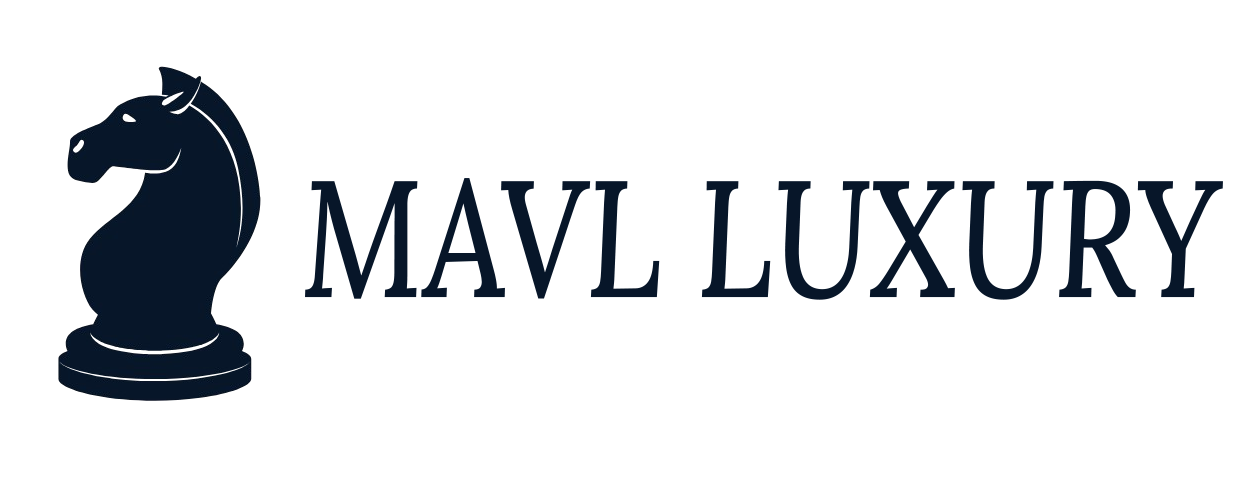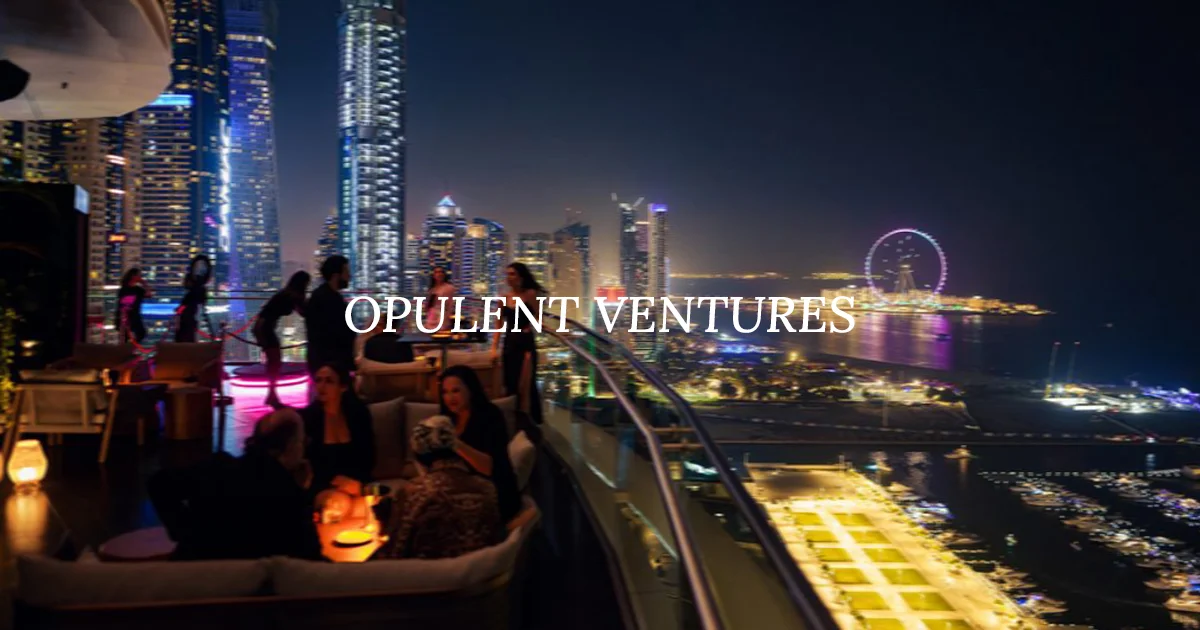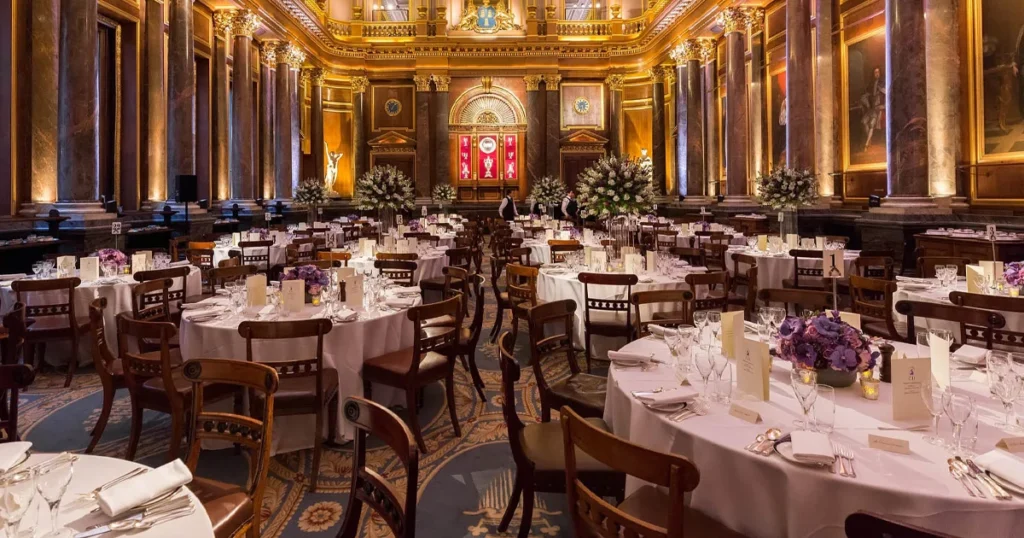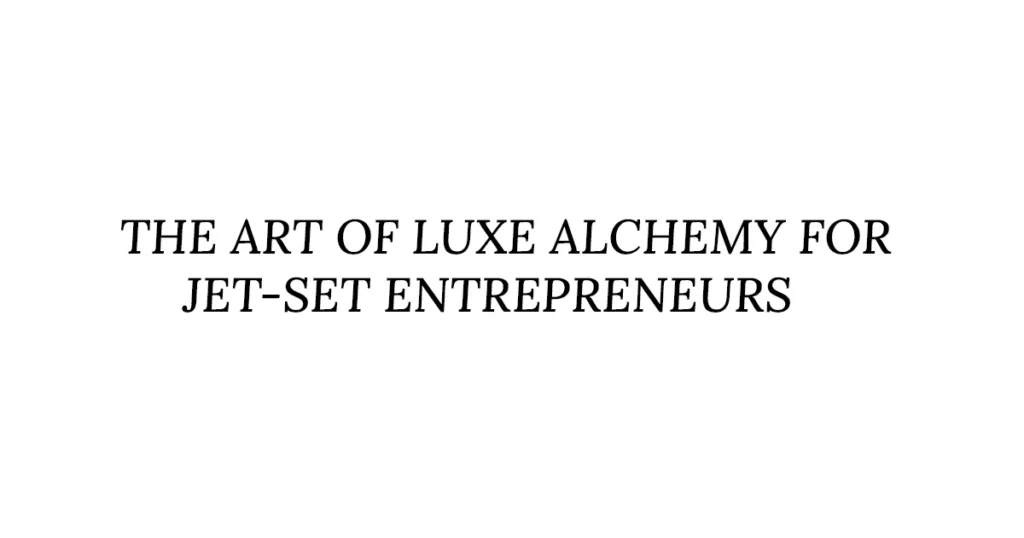Beyond the Boardroom: How Modern Moguls Are Crafting Opulent Ventures for Elite Earnings
Introduction: The New Era of Opulence in Business
The business world is undergoing a seismic shift. Gone are the days when corporate success hinged on predictable, risk-averse strategies and mass-market appeal. Today, a bold new paradigm has emerged one defined by opulence, audacity, and the relentless pursuit of extraordinary value. While traditional corporations prioritized stability and incremental growth, a wave of visionary moguls is rewriting the rules, betting on high-risk, high-reward ventures that marry cutting-edge innovation with unapologetic luxury.
Consider Elon Musk’s SpaceX, a venture that dares to colonize Mars while revolutionizing space travel, or Bernard Arnault’s LVMH empire, which elevates everyday products into status symbols through brands like Louis Vuitton and Dior. These icons embody a departure from convention: Musk’s ventures thrive on moonshot ambitions and cult-like personal branding, while Arnault’s luxury juggernaut capitalizes on exclusivity and timeless allure. Their success signals a transformative truth wealth creation is no longer just about scale or efficiency. It’s about crafting narratives of aspiration, scarcity, and identity that resonate with elite markets willing to pay a premium for the extraordinary.
Modern moguls are redefining the game by blending audacious innovation, hyper-targeted exclusivity, and the strategic amplification of their personal personas. In this new era, opulence isn’t merely about wealth it’s a strategic lens through which leaders captivate the privileged few, turning bold ideas into legacy-defining empires.
Defining Modern Moguls: Traits and Motivations
In the contemporary economic landscape, modern moguls are visionary leaders who redefine industries through audacious ventures and transformative ideas. Unlike traditional tycoons, they thrive in dynamic, technology-driven markets, leveraging innovation and disruption to create lasting legacies. This analysis explores the defining traits and motivations of modern moguls, exemplified by Elon Musk’s ventures, SpaceX and Tesla.
Key Traits of Modern Moguls
- Risk-Taking
Modern moguls embrace calculated risks, venturing into uncharted territories where others see uncertainty. Elon Musk’s founding of SpaceX in 2002 epitomizes this trait. At a time when space exploration was dominated by government agencies, Musk invested his fortune in developing reusable rockets, a concept deemed impractical by many. Similarly, Tesla’s entry into the electric vehicle (EV) market challenged a century-old automotive industry reliant on internal combustion engines. Such risks reflect a willingness to stake resources on revolutionary ideas, even in the face of skepticism. - Visionary Thinking
Moguls are guided by long-term visions that transcend immediate challenges. Musk’s goal of colonizing Mars with SpaceX and transitioning the world to sustainable energy via Tesla illustrate this mindset. His ambitions are not merely profit-driven but aim to address existential challenges climate change and humanity’s survival as a multiplanetary species. This forward-thinking approach distinguishes moguls from conventional entrepreneurs focused on incremental gains. - Adaptability
The ability to pivot strategies in response to obstacles is crucial. Tesla’s journey from near-bankruptcy in 2008 to becoming a market leader involved relentless adaptation, such as vertically integrating battery production and overhauling manufacturing processes. Similarly, SpaceX iterated through multiple failed rocket launches before achieving reusable booster technology, showcasing resilience and flexibility. - Focus on Disruption
Modern moguls disrupt industries rather than compete within existing frameworks. Tesla’s direct-to-consumer sales model and over-the-air software updates upended traditional automotive norms. SpaceX’s reusable rockets disrupted the aerospace sector by drastically reducing launch costs, challenging legacy players like Boeing and Lockheed Martin.
Motivations Driving Modern Moguls
- Desire for Legacy
Moguls seek to leave an indelible mark on history. Musk’s vision of a self-sustaining Mars colony is as much about legacy as it is about innovation. His ventures aim to inspire future generations, positioning him as a pioneer in humanity’s cosmic journey. - Passion for Innovation
A relentless drive to push technological boundaries fuels their endeavors. Musk’s ventures, from Neuralink (brain-machine interfaces) to The Boring Company (tunneling innovation), reflect an insatiable curiosity. At Tesla, advancements in battery technology and autonomous driving underscore a commitment to redefining mobility. - Capitalizing on Untapped Luxury Markets
Modern moguls identify and dominate niche luxury segments. Tesla initially targeted affluent buyers with high-performance EVs like the Roadster and Model S, establishing a premium brand before scaling to mass markets. Similarly, SpaceX’s planned lunar tourism missions cater to ultra-high-net-worth individuals, blending exclusivity with cutting-edge technology.
Case Study: Elon Musk’s SpaceX and Tesla
Musk embodies the modern mogul archetype. SpaceX’s Starship project and Tesla’s dominance in EVs highlight his risk-taking and visionary thinking. By disrupting aerospace and automotive sectors, Musk has redefined innovation, proving that adaptability and a focus on disruption can create new markets. His ventures also reflect a strategic play in luxury markets, from Tesla’s premium vehicles to SpaceX’s commercial spaceflights, while advancing his legacy as a transformative figure.
Beyond Traditional Industries: Sectors Thriving on Opulence
In an era where exclusivity and innovation reign supreme, opulence has transcended traditional markers of wealth like jewelry or automobiles. Today, affluent consumers seek rarity, cutting-edge technology, and transformative experiences that redefine luxury. Three sectors Luxury Goods & Services , Tech & Innovation , and Experiential Ventures are leading this evolution, catering to a clientele that demands more than just material possessions.
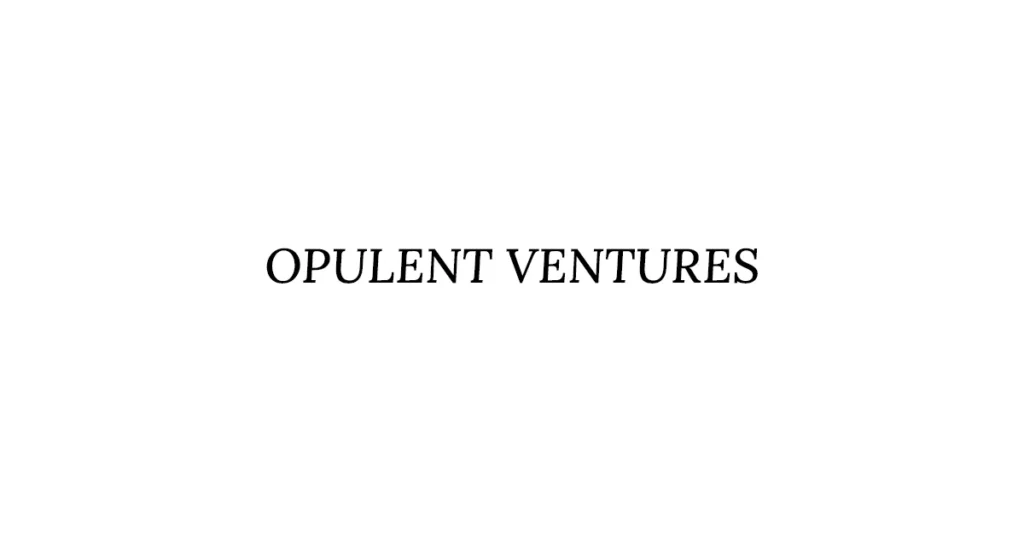
1. Luxury Goods & Services: Redefining Exclusivity
The luxury market has expanded beyond haute couture and watches to encompass hyper-personalized, immersive experiences.
- High-End Fashion (e.g., LVMH): Conglomerates like LVMH (owner of Louis Vuitton, Dior, and Tiffany & Co.) dominate by blending heritage craftsmanship with modern storytelling. Limited-edition collections, celebrity collaborations, and metaverse-ready digital fashion shows keep their offerings aspirational. The focus is on creating ecosystems of exclusivity, where owning a piece is as much about status as it is about artistry.
- Private Aviation (e.g., NetJets): With the rise of ultra-high-net-worth individuals (UHNWIs), private aviation has soared. NetJets, a leader in fractional jet ownership, offers convenience, privacy, and bespoke travel appealing to those who view commercial flights as obsolete. Customized cabins, gourmet dining, and carbon-neutral initiatives cater to both comfort and conscious luxury.
- Exclusive Resorts (e.g., Aman Resorts): Discerning travelers now prioritize seclusion and hyper-curated stays. Aman Resorts, with its minimalist design and remote locations (from Bhutan to the Venetian palazzos), epitomizes understated opulence. Their clientele seeks not just a vacation but a sanctuary, often returning for the brand’s signature blend of discretion and cultural immersion.
2. Tech & Innovation: Digital Opulence
Technology has birthed new forms of luxury, where access, ownership, and convenience are reimagined through innovation.
- NFTs & Digital Collectibles: Non-fungible tokens (NFTs) have created a market for digital scarcity. Platforms like OpenSea enable collectors to own unique artworks or virtual real estate, with sales reaching millions. For the crypto-wealthy, owning a Bored Ape Yacht Club NFT is as prestigious as acquiring a Picasso.
- Blockchain Platforms (e.g., Crypto.com): Beyond cryptocurrencies, blockchain underpins luxury ecosystems. Crypto.com’s exclusive NFT drops and partnerships with sports franchises (e.g., UFC) offer VIP access to events and merchandise, merging fintech with status-driven consumption.
- AI-Driven Concierge Services: Ultra-personalized AI assistants, like those developed by startups such as LuxeAI , curate travel itineraries, dining reservations, and shopping lists tailored to individual tastes. These services act as “digital butlers,” leveraging data to anticipate desires before they’re voiced.
3. Experiential Ventures: The Ultimate Status Symbol
The wealthiest now prioritize experiences over possessions, fueling demand for the extraordinary.
- Space Tourism (e.g., Virgin Galactic): For $450,000 per seat, Virgin Galactic promises suborbital flights, offering passengers a few minutes of weightlessness and the bragging rights of being among the first “space tourists.” This venture transforms luxury into a cosmic adventure, appealing to pioneers with disposable income.
- Ultra-Luxury Real Estate (e.g., The One Beverly Hills): Properties like The One Beverly Hills a $500 million, 105,000-square-foot mansion with a 5,000-bottle wine cellar, nightclub, and panoramic views represent the pinnacle of residential opulence. These homes are designed as private ecosystems, often doubling as art galleries or entertainment complexes.
Why These Sectors Thrive
These industries capitalize on three pillars:
- Scarcity: Limited availability heightens desirability (e.g., NFT drops, invite-only resorts).
- Personalization: Tailored experiences (AI concierge) and bespoke products (custom Hermès bags) cater to individuality.
- Novelty: From space travel to blockchain-enabled art, innovation drives exclusivity.
As wealth concentration grows and technology advances, opulence will continue to evolve, blurring lines between the tangible and digital, the earthly and extraterrestrial. For those who can afford it, the future of luxury is limitless.
4. Case Studies: Moguls and Their Opulent Ventures
Elon Musk: SpaceX and Tesla’s Luxury Electric Vehicles
Elon Musk has redefined opulence through innovation with SpaceX and Tesla. Founded in 2002, SpaceX privatized space exploration, challenging government monopolies like NASA. Its ambitious projects such as the Falcon Heavy rocket and Starship cater to high-stakes clients, including NASA and satellite operators, while envisioning space tourism for the ultra-wealthy.
Meanwhile, Tesla disrupted the automotive industry by merging sustainability with luxury. Starting with the $109,000 Roadster, Tesla positioned electric vehicles (EVs) as status symbols, appealing to affluent buyers through cutting-edge technology and sleek design. The Model S Plaid, priced around $130,000, exemplifies this blend of performance and prestige. Musk’s ventures leverage exclusivity and futurism, transforming industries while cultivating a brand synonymous with aspirational innovation.
Bernard Arnault: LVMH’s Luxury Empire and Experiential Retail
As chairman of LVMH, Bernard Arnault dominates the luxury market by curating a portfolio of iconic brands like Louis Vuitton, Dior, and Moët & Chandon. His strategy focuses on preserving heritage while modernizing appeal. Louis Vuitton’s artisanal craftsmanship and limited-edition collaborations (e.g., with artists like Yayoi Kusama) maintain exclusivity, while Dior’s immersive runway shows such as its 2023 Seville spectacle elevate brand experiences.
LVMH’s experiential retail extends to hospitality, with ventures like Cheval Blanc hotels offering ultra-luxury stays. By intertwining product excellence with storytelling, Arnault has built a $400+ billion empire, proving that opulence thrives on emotional connection and timeless allure.
Jay-Z & Diddy: Premium Spirits and Entertainment Ecosystems
Hip-hop icons Jay-Z and Diddy transformed their cultural influence into opulent ventures. Jay-Z’s Armand de Brignac champagne (“Ace of Spades”), with its $200,000 Midas bottle, became a symbol of hip-hop luxury, featured in music videos and elite events. Diddy’s Cîroc vodka, rebranded as a premium spirit through celebrity endorsements and sleek packaging, dominates the $30+ price tier.
Both moguls expanded into entertainment ecosystems: Jay-Z co-founded Roc Nation (a music and sports agency) and launched the streaming service Tidal, while Diddy’s Revolt Media amplifies his influence. Their ventures blend celebrity cachet with aspirational branding, turning spirits into cultural artifacts and entertainment into a luxury lifestyle.

5. Strategies for Crafting Elite Earnings
In the competitive landscape of luxury and premium markets, crafting strategies that elevate earnings while maintaining exclusivity is paramount. Elite earnings high-profit margins derived from affluent consumers rely on strategic approaches that blend exclusivity, innovation, and brand equity. Below are four key strategies employed by industry leaders to cultivate elite earnings.
1. Exclusivity & Scarcity: The Allure of the Unattainable
Exclusivity and scarcity are foundational to luxury branding. By restricting access to products or services, brands amplify desirability and perceived value. Hermès, for instance, famously employs a waitlist system for its Birkin bags, requiring customers to build relationships with sales associates before gaining purchase eligibility. Limited-edition releases, such as Supreme’s seasonal drops, create frenzied demand through scarcity. Similarly, invite-only platforms like Luxury Retreats (a high-end vacation rental service) cater to elite clientele, fostering a sense of belonging. This strategy not only drives premium pricing but also cultivates a mystique that transcends mere ownership, transforming products into status symbols.
2. Ecosystem Building: Locking In Loyalty
Ecosystems integrate complementary products and services to deepen customer engagement. Apple’s ecosystem spanning iPhones, Apple Watch, and services like Apple Music creates “stickiness,” making users reliant on interconnected devices. Amazon’s luxury marketplace, accessible via Prime memberships, offers curated high-end goods, enhancing customer retention through convenience and exclusivity. Luxury car brands like Porsche extend this concept by offering members-only clubs, exclusive events, and bespoke customization services. By bundling offerings, brands increase customer lifetime value and erect barriers to switching, ensuring sustained revenue streams.
3. Premium Pricing & Branding: Crafting Aspirational Narratives
Premium pricing is justified through storytelling that aligns products with aspirational lifestyles. Rolex, for example, markets its watches as symbols of achievement, leveraging heritage and associations with exploration and sports. Sotheby’s auctions rare art and artifacts, positioning itself as a gateway to elite cultural capital. Pricing here is not just about cost but serves as a signal of exclusivity. Brands like Louis Vuitton emphasize craftsmanship and legacy, allowing them to command premiums that reflect their status as arbiters of taste. This strategy transforms functional items into emblems of identity, appealing to consumers seeking to signal success.
4. Tech-Driven Personalization: Innovation Meets Authenticity
Technology enables hyper-personalized experiences that justify premium pricing. AI algorithms analyze consumer data to curate tailored recommendations, as seen in Net-a-Porter’s personalized shopping interfaces. Luxury brands like Burberry use augmented reality (AR) for virtual try-ons, enhancing engagement. Blockchain technology, meanwhile, ensures authenticity a critical concern in counterfeit-prone markets. LVMH’s AURA blockchain tracks provenance for goods like Louis Vuitton handbags, assuring buyers of legitimacy. These innovations not only elevate customer trust but also allow brands to offer bespoke services, further differentiating themselves in crowded markets.
6. Impact on Luxury Markets and Consumer Behavior
The luxury market is undergoing a transformative evolution, driven by technological innovation, shifting consumer values, and economic dynamics. This transformation is reshaping how luxury is defined, consumed, and monetized, with profound implications for brands and economies worldwide.
Market Expansion: Creation of Niche Sectors
The luxury sector is no longer confined to traditional goods like haute couture or jewelry. Emerging niches such as crypto collectibles and wellness retreats are redefining exclusivity. Crypto collectibles, powered by blockchain technology, have introduced digital scarcity through NFTs (non-fungible tokens). Luxury brands like Gucci and Louis Vuitton have launched NFT collections, blending art, fashion, and digital ownership to appeal to tech-savvy elites. Similarly, wellness retreats such as SHA Wellness Clinic in Spain or Miraval’s immersive getaways combine luxury with holistic health, catering to affluent consumers prioritizing mental and physical rejuvenation. These niches not only diversify the market but also attract a new demographic, merging opulence with cutting-edge trends and self-care.
Consumer Shifts: Demand for Uniqueness, Sustainability, and Immersive Experiences
Modern luxury consumers increasingly seek uniqueness , sustainability , and immersion . Brands now emphasize limited-edition releases, customization, and storytelling to satisfy desires for exclusivity. For instance, Rolls-Royce’s Bespoke program allows clients to design one-of-a-kind vehicles. Sustainability has become a non-negotiable value, with brands like Stella McCartney pioneering eco-friendly fashion and Tesla redefining luxury automotive through electric innovation. Meanwhile, immersive experiences from virtual reality showrooms to metaverse fashion shows—are blurring physical and digital boundaries. Luxury travel operators like Black Tomato craft hyper-personalized adventures, while platforms like Decentraland host virtual luxury boutiques, appealing to a generation valuing access over ownership.
Economic Influence: Job Creation and High-Yield Investments
The luxury boom is catalyzing economic growth through job creation and high-yield investments . Niche sectors demand specialized roles: blockchain developers for NFT platforms, sustainability consultants for eco-brands, and wellness experts for retreats. The rise of experiential luxury has also spurred employment in hospitality, event planning, and tech. Simultaneously, investors are pouring capital into high-return ventures, such as luxury real estate (e.g., branded residences by Four Seasons) and sustainable startups. Venture capital funding for luxury tech, including AI-driven personalization tools, underscores confidence in this sector’s profitability. These trends not only boost local economies through tourism and innovation but also position luxury as a driver of global economic resilience.
7. Challenges Facing Opulent Ventures
Opulent Ventures, a leader in the luxury market, faces multifaceted challenges as it navigates growth, regulatory landscapes, and shifting public sentiment. Here’s an analysis of three critical hurdles:
1. Balancing Exclusivity and Growth
The luxury sector thrives on exclusivity, which drives desirability and premium pricing. However, scaling operations without diluting brand prestige is a delicate act. Strategies to maintain exclusivity include:
- Limited Editions and Scarcity : Producing rare, high-quality items (e.g., Hermès Birkin bags) to sustain demand.
- Personalization : Offering bespoke services to deepen client relationships.
- Controlled Expansion : Entering new markets selectively, ensuring alignment with brand values (e.g., Rolex’s measured global presence).
- Digital Innovation : Leveraging virtual showrooms or exclusive NFT drops to engage tech-savvy elites without mass commodification.
Risks include overproduction or price erosion, which could alienate core clientele. Success hinges on curating growth that amplifies, rather than undermines, the brand’s aura.
2. Regulatory Hurdles
Luxury firms face evolving regulatory pressures:
- Taxation on Luxury Goods : Governments in regions like the EU or India often impose sin taxes or import duties on high-end products. Companies must balance price increases, tax absorption, or lobbying efforts to mitigate impacts.
- Crypto and Blockchain Regulations : As Opulent Ventures explores crypto payments or blockchain for provenance tracking, compliance with anti-money laundering (AML) laws, KYC norms, and cross-border crypto policies becomes critical. Regulatory volatility in markets like the U.S. or China could stifle innovation.
- Data Privacy : Stringent laws (e.g., GDPR) require secure handling of affluent clients’ data, adding operational complexity.
Navigating these frameworks demands agile legal teams and proactive engagement with policymakers.
3. Public Perception
Luxury brands increasingly face scrutiny over societal and environmental impacts:
- Wealth Inequality : Critics argue companies like Opulent Ventures cater to the ultra-wealthy amid global economic disparities. Backlash could manifest as consumer boycotts or reputational damage.
- Environmental Sustainability : High-end goods often rely on resource-intensive materials (e.g., exotic leathers, precious metals). Pressure mounts to adopt circular economies, ethical sourcing (e.g., LVMH’s eco-certifications), or carbon-neutral initiatives.
- Social Media Amplification : Platforms like Instagram magnify critiques, demanding transparent communication and purpose-driven campaigns (e.g., Chopard’s sustainable luxury lines).
To counter criticism, Opulent Ventures must align with ESG (Environmental, Social, Governance) principles, balancing opulence with responsibility to retain trust.

Conclusion: The Opulence Revolution
The Opulence Revolution, spearheaded by modern moguls, has redefined the blueprint for wealth creation through transformative strategies. Tech visionaries, venture capitalists, and industry disruptors have leveraged innovation spanning artificial intelligence, cryptocurrency, and space exploration to monetize data, command global markets, and pioneer new economies. By harnessing the attention economy and agile business models, they’ve not only amassed unprecedented wealth but also reshaped consumer behavior, labor dynamics, and even geopolitical landscapes.
Yet, this revolution is a double-edged sword. While elite ventures catalyze economic growth fueling job creation, technological leaps, and ambitious sustainability projects they also exacerbate societal fractures. Wealth concentration, regulatory loopholes, and monopolistic tendencies risk widening inequality, eroding trust in institutions, and intensifying ethical dilemmas around data privacy, automation, and environmental costs. The same disruptors who promise to solve global challenges often face criticism for evading accountability, leaving communities polarized between optimism and disillusionment.
As we stand at this crossroads, the question lingers: Will the Opulence Revolution democratize prosperity or deepen divides? The answer hinges on a precarious balance between innovation and ethics, ambition and equity, individual gain and collective welfare. Moguls possess the tools to redefine global wealth, but their legacy will depend on whether they wield opulence as a force for inclusive progress or as a monument to excess. The world watches closely, for the path chosen now will echo through generations, shaping not just economies, but the very fabric of societal trust and human potential. The revolution is here; its verdict remains unwritten.
